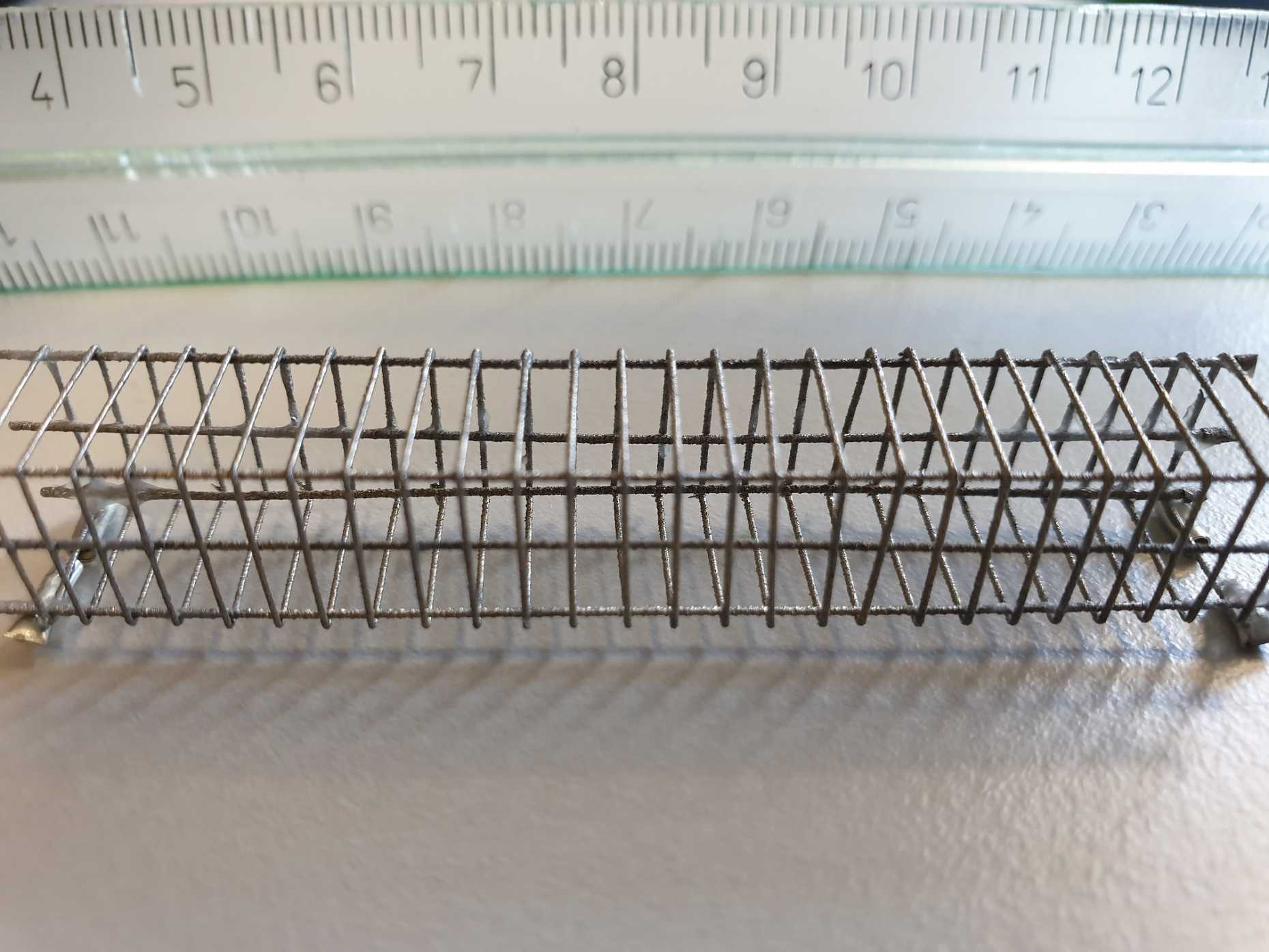Physical modelling of RC using 3D printed reinforcement
Blind prediction contests of shake table tests of RC structures demonstrate the inability of numerical models to predict the response with a reasonable accuracy. It has been argued that a main reason for this poor performance is the global level assumptions (i.e. damping formulation, interaction of components, boundary conditions). Validating and refining them has been particularly hard, as it requires expensive shake table testing of a whole structure. Our approach is to focus exclusively on the global level assumptions and perform (very) small-scale shake table tests using a centrifuge. Ideally, we would like to perform multiple tests in order to assess the numerical models statistically, as seismic design is an inherently stochastic process.
We use sand as scaled aggregate and a metal 3D printer to manufacture steel reinforcement of submillimeter diameters, placed directly at its final position. Our first tests show that 1:40 specimens behave very similarly to full-scale specimens. If successful, the method will allow to experimentally study problems that were out of discussion till now like pounding of adjacent RC buildings or realistic physical modelling of bridge-abutment interaction.
Funding: ETH Grant (PI: Michalis Vassiliou)
Duration: 1.1.2022 - 31.12.2024
PhD Students: Medhat Elmorsy
